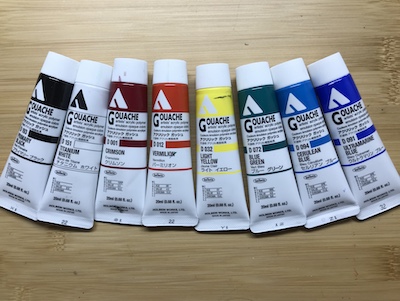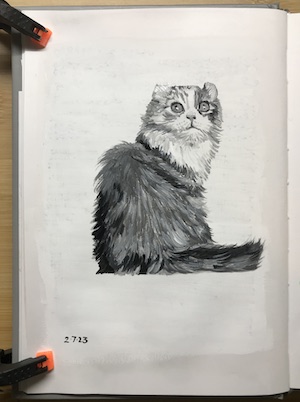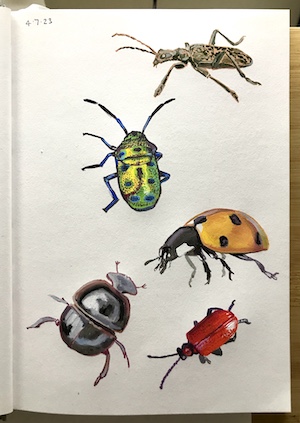A month or so ago I went to the launch of a friend’s book and talked to a mutual friend who is an editor of a small press publishing venture about my adventures in art. Not long after, she got in contact to ask me if I was interested in doing a book cover illustration for a modern day comic fantasy book based on greek mythology.
When I went through my artwork for the Artist of the Month display some of it was from my days as an illustrator. I felt a mix of nostalgia and curiosity. I’d always wanted to do fantasy book covers, but during the years I ran the illustration business only a few came along, and none for a book. There was an interior illustration of a “friendly dragon” for the children’s education market, black and white internal sf magazine illustrations and one colour cover. I painted cover art for two of my books but my publisher didn’t use them, though they did go on some magazine covers later.
Looking at the art made me wonder if I could try fantasy art again, so my answer to my editor friend’s enquiry was ‘yes!’.
Once I knew what she wanted, and she approved some preliminary sketches, I bought two art materials that were entirely new to me: acrylic gouache and aquaboard.

It might seem crazy to tackle a professional job with a medium I’d never used, but the year of Daily Art gave me confidence that I can work out how to use new mediums pretty quickly, especially if they were similar to what I’d already used. I’d got pretty familiar with both acrylic and gouache during that year. As for aquaboard, I had a small piece from a bag of free art materials given out at an art society meeting, so I had a play with that with the acrylic gouache and liked it.
Both products weren’t available when I ran the illustration business, and they proved ideal for the job. The acrylic gouache dries flat like ordinary gouache, but it can be painted over without disturbing the previous layer. It dries really fast, but the drying retarder I use with normal acrylics worked really well with it. The aquaboard can be wiped almost clean if the paint is still wet, or the paint scratched off if it was dry. All these qualities allowed for the sorts of changes that happen in commissioned illustrations – and I certainly needed them. I wound up scraping off an entire arm and painting it in a new position, and changing the colour of the clothing and skin. I was also able to use the drying retarder as a tinted glaze to change the overall colour of an area.
Some days I had a bit of paint and time left over, so I added some art to my ideas sketchbook – preparing the surface for the cat and dog with gesso.



And I realised that I rather like acrylic gouache. It’s easier to use than acrylic, especially mixed with drying retarder. I wouldn’t say it was better or worse than gouache, because their reactive/nonreactive natures simply means they’re suited to different purposes and styles of working, but I may like it just as much.
In fact, I like it enough to buy a ‘student set’ of smaller tubes to take plein air painting or to still life sessions at the art society. It won’t replace oils, but it would be much easier to pack for a plane trip when I next go on a holiday.
